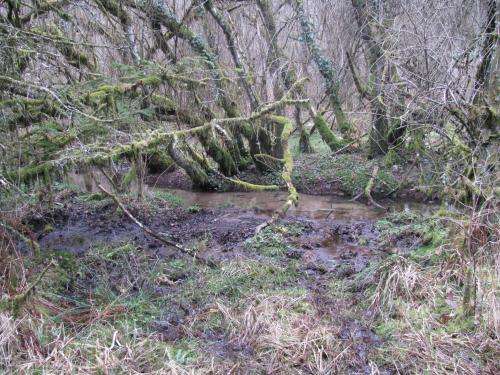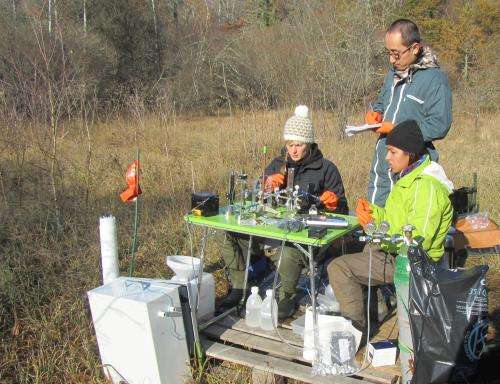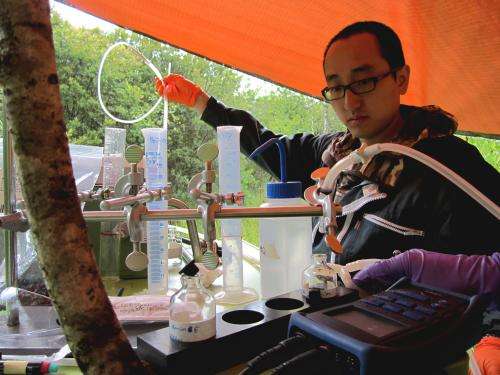Uranium (IV) found to be mobile in a natural wetland

Because they are known to mop up pollutants, artificial wetlands are considered to be an efficient strategy to contain waterborne uranium. But studying a natural wetland near a former uranium-mining site in the French region of Limousin, researchers have found that under certain circumstances, uranium can be partly remobilized into the surrounding water. In a recent publication in Nature Communications, they show how it becomes mobile again by binding to tiny metallic and organic compounds with a little help from ambient bacteria. Their study, carried out in collaboration with the HZDR in Germany, and Areva in France, has been highlighted in a press release by the journal.
In nature, uranium is found in two forms: U-4 and U-6, where the numbers indicate how many chemical bonds the atom can form. "Until recently, scientists thought that U-4 was immobilized as a mineral, while U-6 was considered to be the only highly soluble form," says the study's principle investigator Rizlan Bernier-Latmani. Today, scientists know that this distinction is not quite as clear-cut, having discovered a non-soluble, yet highly mobile form of U-4.
In wetlands, bacterial or chemical processes transform the soluble form of uranium, U-6, into U-4. "This was considered beneficial from an environmental point of view, as it was assumed to sequester the contaminant, keeping it out of the water," explains Bernier-Latmani.
But now, the researchers have shown that the sequestered uranium can be more mobile than previously assumed. Studying a stream that flows through a wetland downstream of a former uranium mine in Limousin, France, they found that some of the uranium could be remobilized from the wetland into the stream. Until now, uranium concentrations at the outlet of the site were assumed to be due to the waste rocks of the former mine.

To be remobilized from the wetland, a very specific set of circumstances has to be satisfied, explains Bernier-Latmani. "We found that uranium has to be present in the mobile form of U-4, in the presence of large quantities of organic matter, iron, and relatively little sulfide," she says.
According to first author Yuheng Wang, these conditions came together perfectly in the wetland that the researchers studied. Uranium was present in a clay layer as tiny aggregates of mobile U-4, along with sufficient amounts of iron. The entire wetland was teeming with bacteria as well as invisibly small string-like particles made up of organic matter.
The remobilization itself is a complex process. First, the bacteria use iron for energy, transforming it into a form that readily associates with the string-like particles that are found throughout the wetland. When iron latches onto these particles, like beads on a string, it is free to migrate up and down the soil until it encounters the U-4 aggregates. Only then can the U-4 latch on to the iron "beads" and be carried out of the wetland and into the stream.

When the conditions outlined above are met, the mobility of uranium thought to be sequestered in wetlands might be underestimated. At the same time, this research suggests a novel strategy that could help improve the efficiency of wetlands at capturing waterborne uranium: if the bacteria are given enough sulfate, they release sulfide which sequesters iron, decreasing the amount of iron available, and effectively stopping the chain of events well before uranium is remobilized.
Journal information: Nature Communications
Provided by Ecole Polytechnique Federale de Lausanne



















